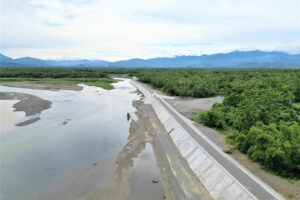Saidy Pangarungan’s task: Transparent elections

There’s a newly designated Chairman of the Commission on Elections (COMELEC), Saidamen Balt Pangarungan, also known as “Saidy” or “Gob” for Governor. Pangarungan once served as Governor of Lanao del Sur. President Corazon Aquino appointed him Officer-in-Charge (OIC) Governor in 1986, right after the EDSA People Power uprising. He would later serve as the elected Chief Executive of Lanao del Sur from 1988 to 1992.
Pangarungan was a street parliamentarian battling the Marcos authoritarian regime after the execution of former Senator Ninoy Aquino at the then Manila International Airport. Pangarungan and other oppositionists from Muslim Mindanao, particularly from Lanao del Norte and Lanao del Sur, Basilan, Zamboanga del Sur and Zamboanga del Norte, North and South Cotabato, Tawi-Tawi and Sulu, joined us in protest rallies and demonstrations in different parts of Metro Manila in the early 1980s.
Huge delegations from these provinces would join rallies held Wednesday and Friday afternoons at Ayala Avenue and the Ugarte Field in Makati. They were also present at Mendiola, Welcome Rotonda in Quezon City, Liwasang Bonifacio, the Batasan Complex, the Comelec Main Office, Plaza Miranda, at the Prayer Rally on Feb. 20, 1986 at Luneta Park where more than a million gathered to protest the cheating by the Comelec for Marcos and the proclamation of Marcos and Arturo Tolentino as winners of the presidential snap election by the Legislative Assembly, and, finally, from Feb. 22 to 25 at EDSA.
As governor of Lanao del Sur, Saidy Pangarungan, challenged the leadership of Ali Dimaporo and other politically powerful clans in Lanao. Dimaporo, a staunch ally of Marcos, maintained his grip on Lanao del Sur through a combination of patronage politics, hardball politics, and support from the national government.
Dimaporo received huge chunks of revenue allotments from Marcos to support infrastructure development at the grassroots. Lanao del Sur was known for thousands of barangays which received financial support for roads, bridges, irrigation systems and other infrastructure. Most of these funds were used to buy cement, steel bars, and other materials for infrastructure construction.
During the snap elections, the opposition continued to closely monitor funds downloaded to these barangays. It was discovered that most of these barangays were non-existent. A rudimentary geodetic survey (there was no Google Maps at that time) showed that some barangays were located in the middle of lakes. Others were discovered to be in isolated inhabitable areas for which infrastructure projects could not be reasonably justified. The surveys concluded that if all that money that went to Lanao del Sur for roads and bridges were actually used for such infrastructure, thousands of roads would be crisscrossing the province like spaghetti served on a plate. The joke was that if all those hundreds of thousands of bags of cement were indeed used for all those so-called projects, the province would be in great danger of sinking under the weight of thousands of kilos of cement and steel bars.
The abolition of 2,000 “ghost” barangays” was one of the tasks given to Pangarungan, aside from challenging the formidable and well-entrenched Dimaporo political dynasty, when he was appointed Undersecretary of the then Department of Local Government and Community Development (DLGCD). Later on, the DLGCD was renamed the Department of the Interior and Local Government (DILG).
Appointed by President Corazon Aquino to the DILG post, Pangarungan chaired the inter-agency committee tasked to investigate the notorious and well-known ghost barangays in the Muslim provinces. The creation of these barangays, which later received allotments for ghost projects, had become the modus operandi of politicians with the knowledge and consent of Marcos and his enablers. Malacañang in fact instigated the creation of these ghost projects in return for the loyalty of local warlords.
The thorough investigation resulted in President Aquino signing an Executive Order abolishing the ghost barangays in the two Lanao provinces on the recommendation of the inter-agency committee headed by Pangarungan. President Aquino remarked upon signing the order that the government saved billions in abolishing these ghost barangays. The hard truth was that the government experienced some kind of a double whammy: taxpayers paid for nonexistent projects which did not have a chance to earn even a single percent return on investment.
Pangarungan later was credited with authorship of another executive order granting regular salaries and allowances to village officials in the country.
Aside from being former governor of Lanao del Sur, Saidamen Pangarungan is also Sultan of the province. Pangarungan’s wife, Princess Johayra Diamond, also comes from a fairly big family with royal ancestry. She belongs to the Ali-Pacasum family which also has political clout in the area.
Pangarugan, a lawyer, finished his Liberal Arts and Law degrees at San Beda College (now University) in 1978 as a consistent college scholar. After passing the bar, he joined the prestigious Siguion-Reyna, Monecillo and Ongsiako law offices. Endowed with a good mix of involvement in private and government business practice, Pangarungan was legal counsel of multinational firms such as the Bank of America, Goodyear, Caltex, and San Miguel Corporation, among other firms.
One can say that Pangarungan walked into some problems at the Comelec as he inherits issues unresolved by his predecessor and others created or unacted upon by the present board of commissioners appointed way before he came into the picture.
Pangarungan emphasizes that in appointing him, President Duterte’s principal concern was “to leave a legacy of clean and honest elections.” And “that is what you can expect from me,” Pangarungan promises.
Pangarungan’s work is cut out for him. He and his commissioners will have to resolve the Marcos Jr. disqualification case, the long resolution of which has resulted in justifiable flak from recently retired Comelec commissioner Rowena Guanzon. The feisty Guanzon has squared off with commissioner Aimee Ferolino on the case, which has naturally attracted the attention of a skeptical public.
The most recent controversy that is haunting the poll body is the printing of ballots and the configuration of Secure Data (SD) cards without citizens’ observers monitoring these critical parts of the election process.
The challenge before Pangarungan and his commissioners is to gain the trust and confidence of a public that remains skeptical of Comelec’s commitment to clean and honest elections due in large part to past experience. Some say the skepticism is unfortunate because the “last four or five elections have been “generally and fundamentally clean.”
Trust in the results of the forthcoming elections is essential if we want to continue developing a national consensus for political and economic stability. We have a situation of extreme partisanship, and a clean, honest, and transparent election is necessary to lower the temperature and move on to make democracy work.
At the end of the day, however, trust is to be earned.
Philip Ella Juico’s areas of interest include the protection and promotion of democracy, free markets, sustainable development, social responsibility and sports as a tool for social development. He obtained his doctorate in business at De La Salle University. Dr. Juico served as secretary of Agrarian Reform during the Corazon C. Aquino administration.




